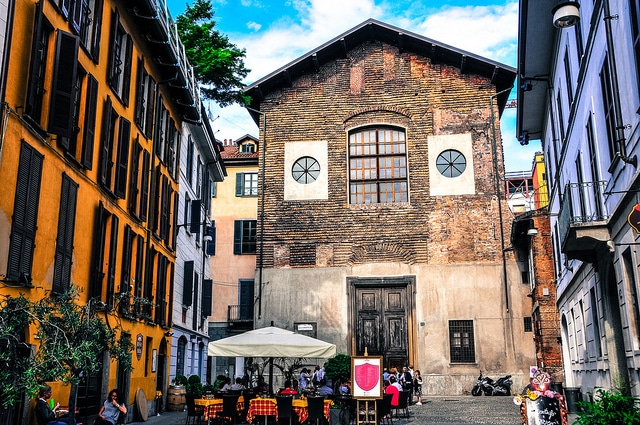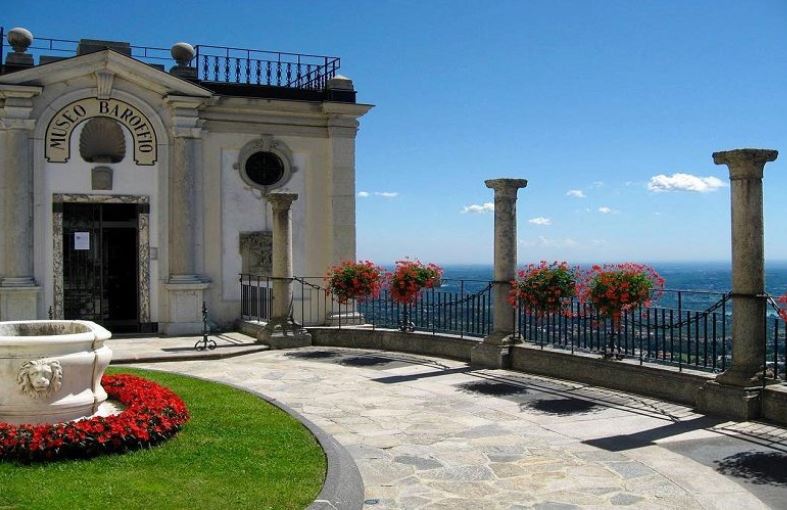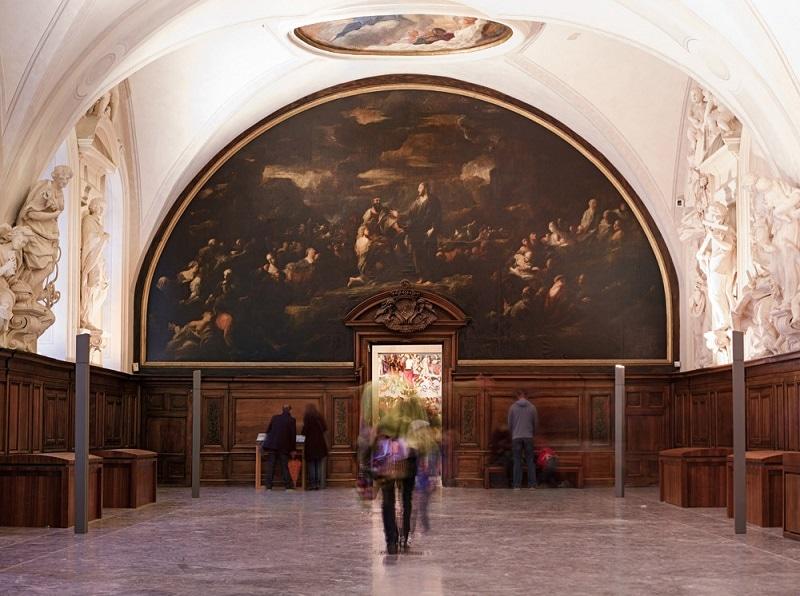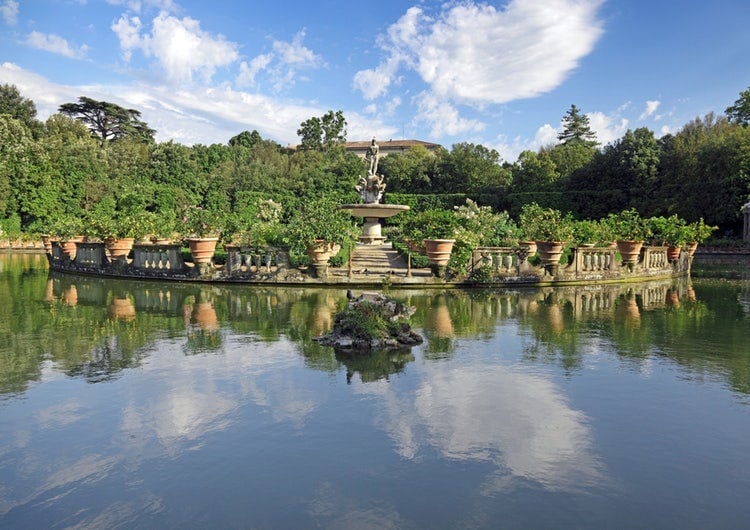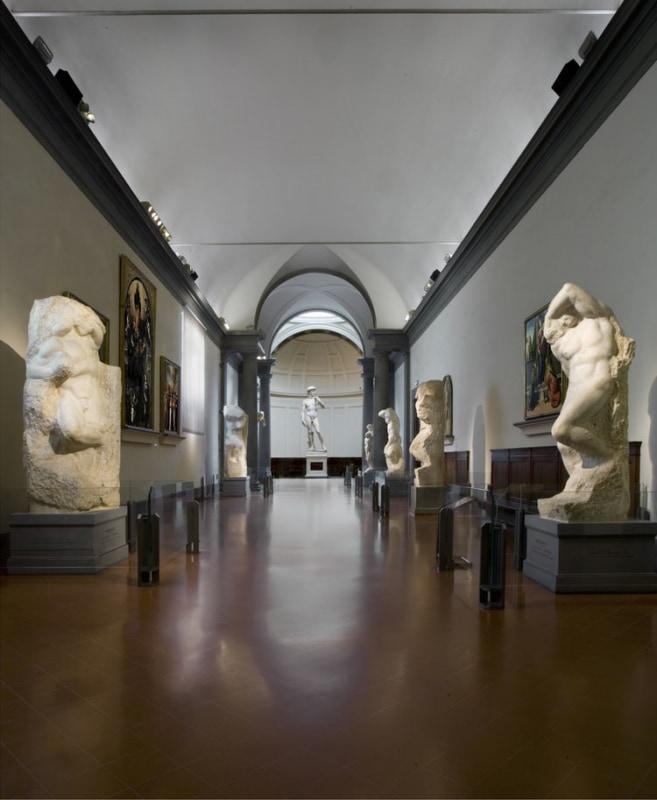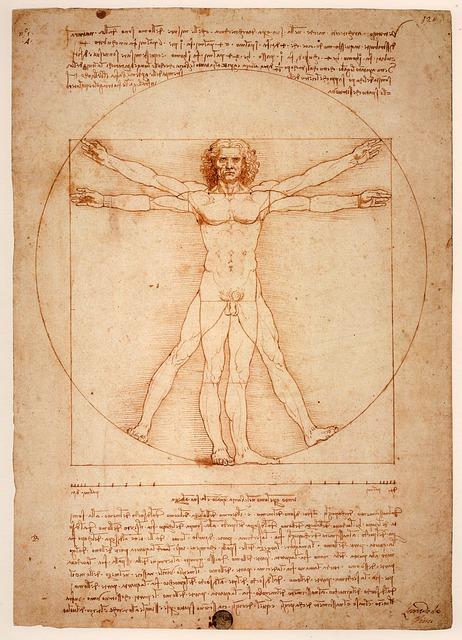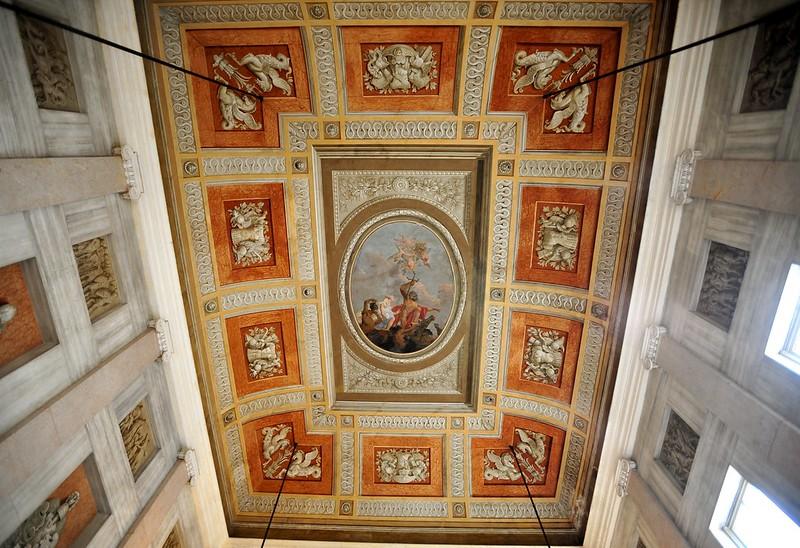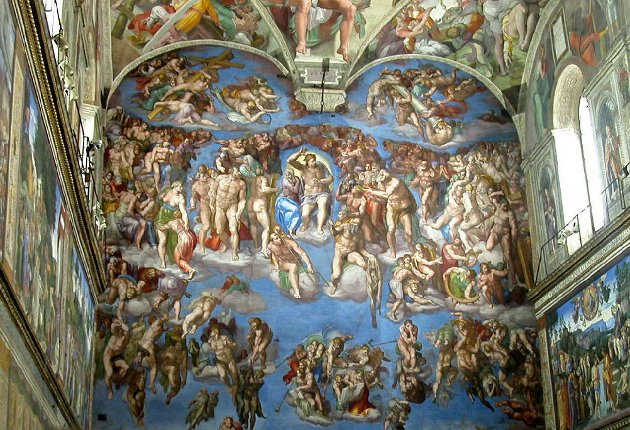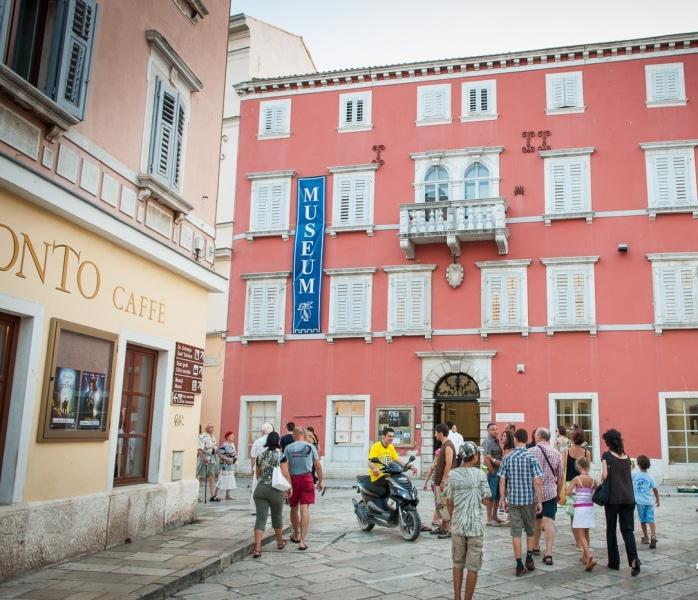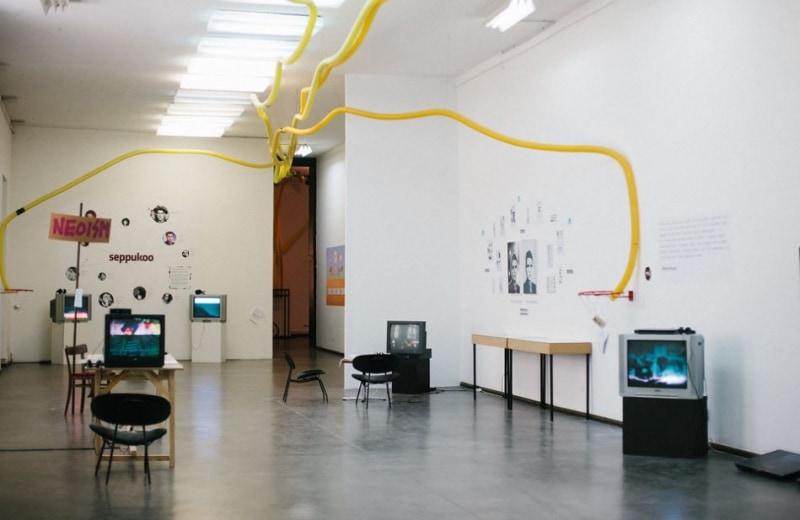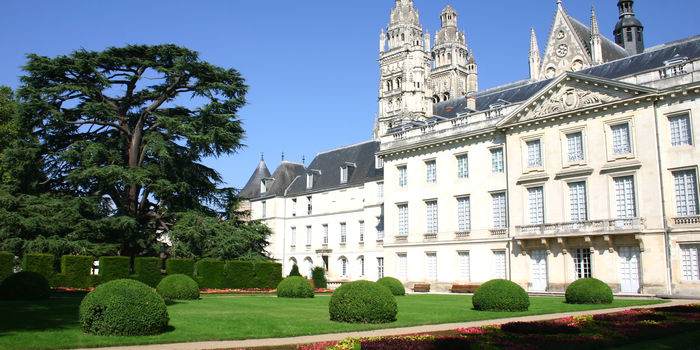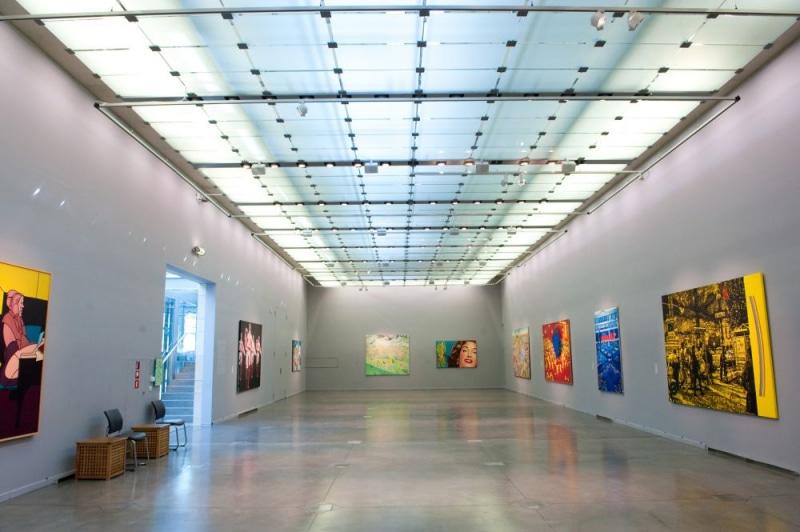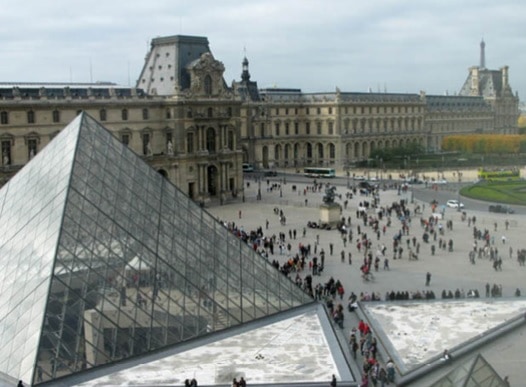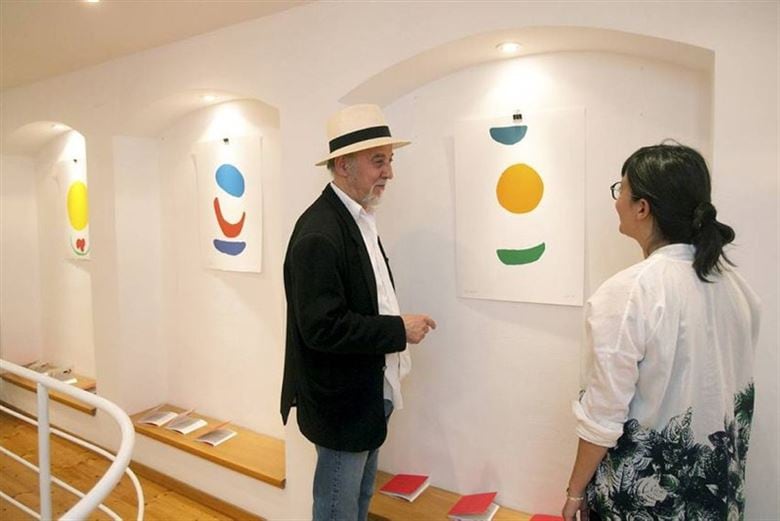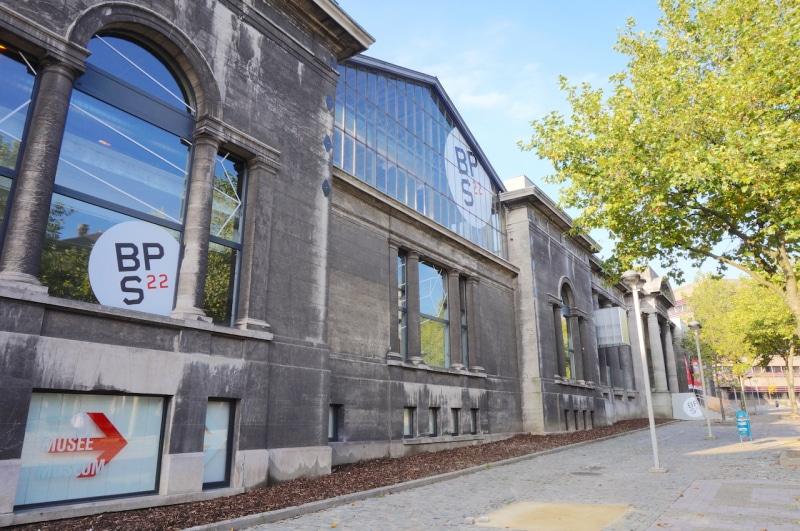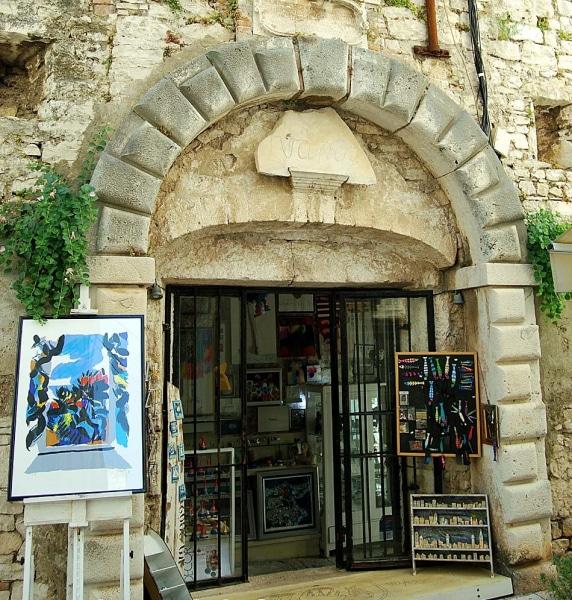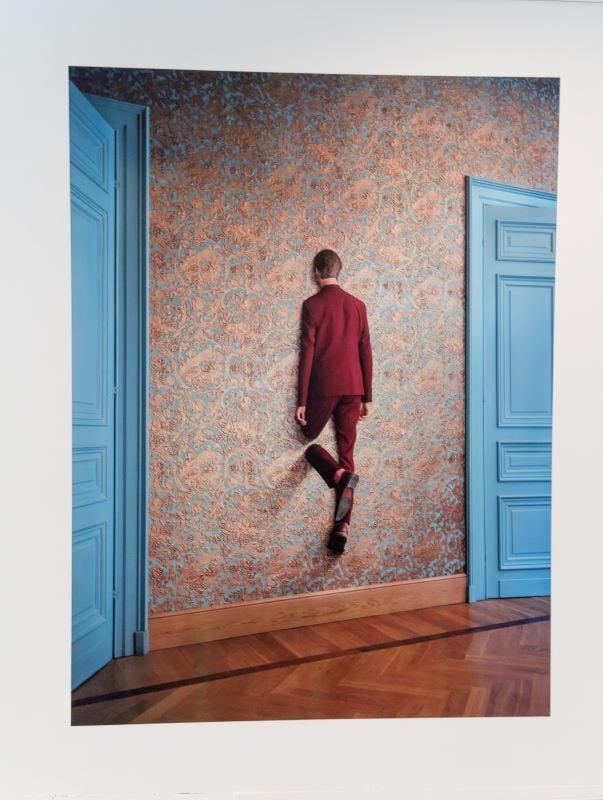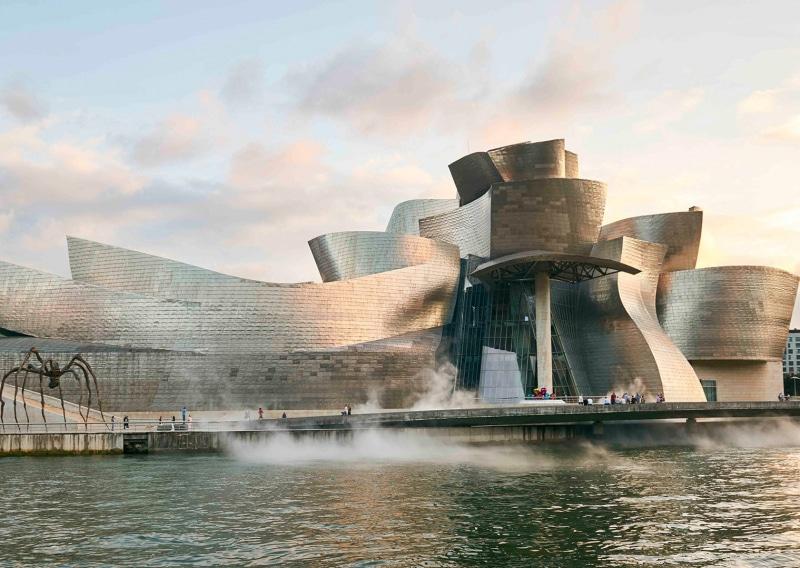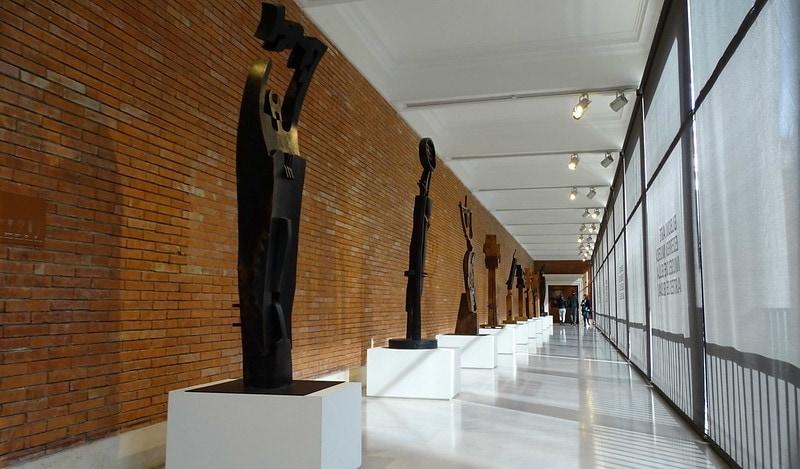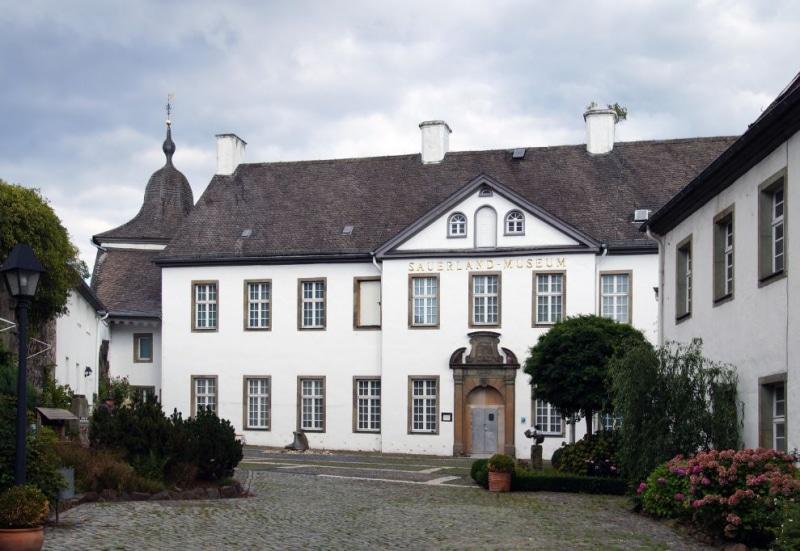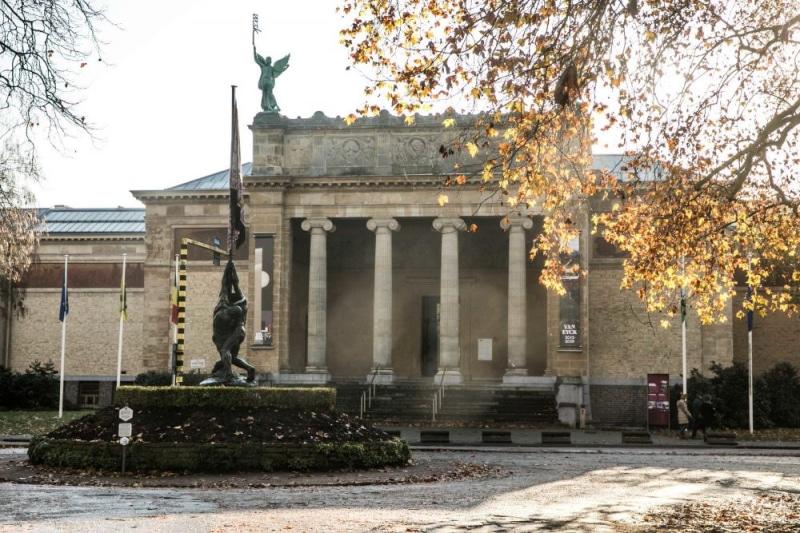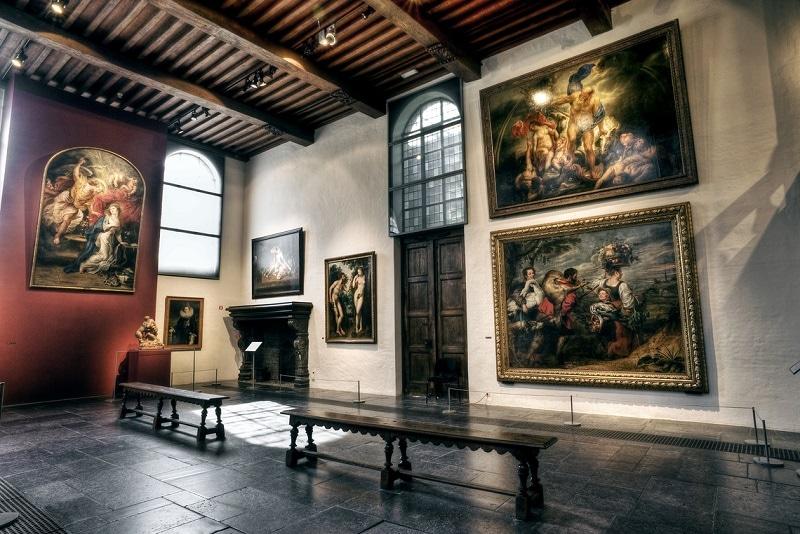ArtGalleries, Nice
Removed from Unnamed collection
Marc Chagall National Museum
The National Marc Chagall museum, was created by the artist's will to bring together in one purpose-built place his most important biblical works : the 17 paintings which make up the Biblical Message.
The permanent collection is the biggest public collection of works by Marc Chagall. It is organized around the set of works produced by the painter on the Old Testament themes, supplemented by a large number of works of secular or religious inspiration: over 400 painting, gouaches, drawings, wash drawings and pastels. The museum offers the visitor a first room containing twelve large-size paintings illustrating the first two books of the Old Testament, Genesis and Exodus. In a second, smaller hexagonal room are five compositions on the theme of the Song of Songs, another Old Testament book. Audio-guides in French, English, German, Italian, Russian, Japanese, Chinese and Spanish . http://en.nicetourisme.com/nice/183-musee-national-marc-chagall
Map
Explore more places related to this search:
Removed from Unnamed collection
Brera
Brera is synonymous with the artistic heart of the city. In fact, as you stroll along the streets of this ancient district, you cannot help but be enchanted by its almost surreal atmosphere boasting small artisan’s workshops or quaint stores selling canvases and paints. Additionally, Brera is home to the impressive Accademia di Belle Arti, where visitors can admire Milan’s famous painting collection at the Pinacoteca (the Brera Picture Gallery), the historic Biblioteca Nazionale Braidense (Braidense National Library) , the Museo Astronomico (The Astronomical Museum), the oldest scientific research institute in the city and the Giardino Botanico (Botanical Gardens), an evocative green space located. https://www.wheremilan.com/sightseeng-brera/welcome-to-brera-district/
Map
Removed from Unnamed collection
Museo Baroffio
Dedicated to the ones interested in the history of Santa Maria del Monte, it includes and shows romanesque sculptures, precious miniatures, a collection of important paintings of Giuseppe Baroffio Dall’Aglio and a section of sacred art from the 20th century.
You'll find 20th-century bright rooms but also hidden old rooms situated under the Sanctuary, with remains of fifteenth-century frescos. The museum includes also a beautiful terrace with one of the most beautiful views in Lombardia.
The Madonna con il Bambino by Domenico and Lanfranco from Ligurno is the symbol painting of the museum. http://www.vareseturismo.it/en/blog/museo-baroffio-e-del-santuario-del-sacro-monte-sopra-varese
Map
Removed from Unnamed collection
Museum of Fine Arts of Lyon
The Museum of Fine Arts is one of the largest French and European museums. Located in the heart of Lyon, between the Rhône and Saône rivers, it is found in a magnificent building dating from the 17th century.
The collections are exhibited in over 70 rooms and offer visitors an outstanding sample of art from antiquity to contemporary art. The museum is regularly enriched, through an active acquisition policy that relies on donors, art lovers, collectors and the descendants of artists. http://www.mba-lyon.fr/mba/sections/languages/welcome
Map
Removed from Unnamed collection
Palazzo Pitti and the Boboli Gardens
This enormous palace is one of Florence's largest architectural monuments. The original palazzo was built for the Pitti family in 1457, designed by Filippo Brunelleschi and built by his pupil Luca Fancelli. The original construction consisted of only the middle cube of the present building. In 1549, the property was sold to the Medicis and became the primary residence of the grand ducal family. The palace was then enlarged and altered; from 1560, Bartolomeo Ammannati designed and added the grandiose courtyard and two lateral wings.
Today, the Pitti Palace houses some of the most important museums in Florence: on the first floor is the Palatine Gallery, containing a broad collection 16th and 17th century paintings (including works by Raphael), and the Royal Apartments, containing furnishings from a remodeling done in the 19th century.
On the ground floor and mezzanine is the Treasury of the Grand Dukes (formerly known as the the Silver Museum or Museo degli Argenti) displaying a vast collection of Medici household treasures, from table silverware to precious stone vases, rock crystals and precious jewelry.
The Gallery of Modern Art is on the top floor, holding a collection of mostly Tuscan 19th and 20th century paintings. https://www.visitflorence.com/florence-museums/pitti-palace.html
Map
Removed from Unnamed collection
The Accademia Gallery
Visiting the Galleria dell’Accademia, you're most likely target are the magnificent giant marble sculptures created by Michelangelo, and above all, the glorious David. If you explore the museum with a bit more time, the Accademia will offer you much more in the less crowded halls, satisfying any curiosity for botany, music, art symbols and painting techniques.
The Accademia welcomes the visitor in the Hall of the Colossus, name taken from the huge models of the Dioscuri of Montecavallo which were displayed in this large hall in the 19th century. It now hosts in the center the plaster model for the stunning marble sculpture of Giambologna’s Rape of the Sabine Women. Giambologna prepared the model as an exercise in creating a tightly-knit group of three figures from just one large block of marble. He did not actually name the sculpture, it was meant to be as a “simple” exercise of skill and it became the first example of such magnificent talent. https://www.visitflorence.com/florence-museums/accademia-gallery.html
Map
Removed from Unnamed collection
Musee de Millau et des Grands Causses
In the centre of Millau, a town hotel from the 18th century houses the museum: 30 exposition rooms dedicated to palaeontology, prehistory and regional archaeology, as well as traditional activities of leather craft and glove-making.
Palaeontology: diverse fossils including the famous skeleton of an elasmosaur. Pre-history: furniture from the palaeolithic to the monolithic. Archaeology: the most important collection of vases from the Roman Empire with the production of the Graufesenque workshops. Leather and gloves: a DVD film retraces the specific savoir-faire, rich of ancestral traditions and modern techniques enabling skins to be worked on. A recreated workshop shows how gloves were made.
Free for the individuals the first Saturday of the month. https://www.tourisme-aveyron.com/en/diffusio/sites-visit/musee-de-millau-et-des-grands-causses-millau_TFO18801517986
Map
Removed from Unnamed collection
Accademia Gallery Museum
The Accademia Museum (Gallerie dell'Accademia) is part of a complex including the church of Santa Maria della Carità, the homonymous Scuola Grande (the original entrance is now the main access to the museum) and the Monastery of the Canonici Lateranensi (the complex was in use until the beginning of the XIX century).
The gallery take its name from the Accademia delle Belle Arti (Art Accademy) who opened the building and shared the sites until few years ago (2004).
The operas preserved inside the Gallery are many and of inestimable value. Most of the painting comes from a period between the XIV and the XVIII century, the most important authors are Carpaccio, Bellini, Tintoretto, Tiziano. Also many sculptures and drawing can be admired, amongst them the vitruvian man by Leonardo da Vinci, exposed only few periods. Initially the museum was operating as didactic and restoration of art operas centre. http://venice-tourism.com/en/places/dorsoduro-district/accademia-gallery-museum
Map
Removed from Unnamed collection
Correr Museum
The Correr Museum offers a real opportunity to know the Art and History of Venice. In the Napoleonic wing that was during the 19th century house of kings and emperors with their impressive neoclassical rooms, we find an important collection of works of one of the greatest sculptors of that time, Antonio Canova (1757-1822). In this museum we can also visit the New Magistrates, "Procuratie Nuove", which were designed between 1552-1616 by the architect Vincenzo Scamozzi and where once the most important civic authorities of the Republic of Venice were housed.
In these spacious rooms, currently there are collections that document various aspects of the city's history, such as public institutions, daily life, naval achievements and local festivals. On the second floor is the exhibition of the Art Collection covering the period from the beginning of Venetian painting to the 16th century; also here we can find other incomparable masterpieces. https://www.venice-museum.com/correr-museum-piazza-san-marco.php
Map
Removed from Unnamed collection
Fondation Bemberg
This museum that brings together works from the Renaissance and Impressionist masterpieces can be found in the most beautiful mansion house of the city: a feast for the eyes.
This foundation housed in the Hôtel d’Assézat and created by Argentinian collector Georges Bemberg brings together numerous works of western art from the Renaissance to the early XX Century.
In the Renaissance-style salons, the first floor brings back to life the interiors of different eras by combining period furniture, tableaux and objet d’art. The 2nd floor is given over to modern paintings and it is important not to miss the 35 tableaux by post-impressionist Bonnard.
Among the artists on display we find Guardi, Cranach the Elder, Veronese, Titian, Fantin-Latour…
In order to fully appreciate this visit, lift your gaze and admire the well-preserved XVI Century ceiling on the 1st floor. https://www.toulouse-visit.com/fondation-bemberg/toulouse/pcumid031fs0004c
Map
Removed from Unnamed collection
Vatican Museums
The Vatican Museums,founded by Pope Julius II in the early 16th contain one of the world's greatest art collections in the world. Exhibits range from Egyptian mummies and Etruscan bronzes to ancient busts, old masters and modern paintings. https://m.museivaticani.va/content/museivaticani-mobile/en.html
Map
Removed from Unnamed collection
Vatican Museums and Sistine Chapel
The first nucleus, a collection of ancient sculptures, was constituted by Julius II (1503-13) but the idea of the museum was born with Clement XIII (1758-69), who with the assistance of Winckelmann had the Museo Profano exhibiting set up Greek and Roman sculptures. With Clement XIV (1769-74) and Pius VI (1775-99) the Museo Pio Clementino was born, which brings together the most famous examples of ancient sculpture such as the Apollo del Belvedere, the Laooconte group and the Torso del Belvedere, while in 1807 -10, under Pius VII, the Chiaramonti Museum is set up by Canova, which houses Roman sculptures.
In 1822 the Braccio Nuovo is opened with over 150 sculptures including statues such as the wounded Amazon, the Doryphoros, the enormous statue of the Nile, the Augustus of Prima Porta. With Gregory XVI the Gregorian Etruscan Museum was opened in 1837 , with finds coming mostly from the nineteenth-century excavations carried out in southern Etruria, and in 1839 the Egyptian Gregorian collecting a series of statues depicting deities or characters of the royal family, sarcophagi, mummies and elements of funerary furniture. In 1844 he opened the Lateran Profane Museum (today Gregoriano Profano) and later the Pio Cristiano which collected materials from excavations in the Roman catacombs including numerous sarcophagi. https://www.turismoroma.it/it/node/121
Map
Removed from Unnamed collection
Civic Museum Rovinj
Located in the baroque palace of the XVII / XVIII century of the Count Caliphs, the museum was founded in 1954 on the initiative of some artists of Rovinj. Their idea was to gather the rich cultural heritage of the city in a single exhibition space. The museum serves as a town gallery and exhibits its precious collection to the public in a permanent exhibition.
In its half-century of life it has gathered a rich collection that includes sections of contemporary art, old masters, archaeological, ethnological, books, documents and photographs on the activities of the partisan battalion Pino Budicin and more.
The Museum houses one of the most important collections of ancient masters in Croatia, in particular the Italian masters from the fifteenth to the nineteenth century. The Renaissance is represented through works by artists from the circle of Giovanni Bellini and Bonifacio de Pitatija (Adoration of the Magi), while the most important exponents of Baroque are Marco Ricci (On the road to Emmaus), Antonio Zanchi, Jerome Romanin, Nicola Grassi, the school of Guido Reni and Bernardo Strozzi and others. https://www.inforovinj.com/eng/rovinj/znamenje/zavicajni-muzej-rovinj.asp
Map
Removed from Unnamed collection
Museum of Modern and Contemporary Art Rijeka
The museum has its roots in the Fine Arts Gallery built in 1948. Six years later, in 1954, the 1954 Salon was founded - the Exhibition of Contemporary Sculpture and Painting in the Socialist Federal Republic of Yugoslavia (SFRY). This was the first group exhibition of the modern fine arts production of the former state. In 1960 it started the Biennale of Young Artists and in 1968 it presented the International Exhibition of Original Drawings. Since 1990 it has been presenting Croatian artists at the European and Mediterranean Biennale of Young Artists. In 1962 the institution changed its name to the Rijeka Modern Gallery and in 2003 to the Museum of Modern and Contemporary Art.
The Museum is working on a number of collections. These are collections of works by national artists Božidar Rašica, Romolo Venucci and Slavko Grčko, as well as collections of drawings, graphics, sculptures, posters, paintings, photographs and media art. The exhibition activities take place in Krešimirova Street. http://www.visitrijeka.eu/What_To_See/Museums_and_Collections/Museum_of_Modern_and_Contemporary_Art
Map
Removed from Unnamed collection
The Museum of Fine Arts
The Museum of Fine Arts Tours is housed in a historic building of exceptional quality. The site is of paramount importance for the history of ancient Caesarodunum; the museum houses in its underground the most beautiful lapidary inscription to the glory of the Turons. The first bishops had chosen to settle near the cathedral, in a palace along the wall of the IV the century.
After 1789, the Palace of the Archbishops became a theatre, Central School, library and then by departmental decree of October 6, 1792, and with the passionate energy of the founder of the city's drawing school, Charles-Antoine Rougeot and his son-in-law, Jean -Jacques Raverot, became the repository of works seized during the Revolution.
The museum was officially created in 1801, 1802 and during the XIX the century, the buildings are again assigned to the archdiocese. It was not until 1910 that the collections returned to the old archepiscopal palace. http://www.mba.tours.fr/131-le-musee-des-beaux-arts-de-tours.htm
Map
Removed from Unnamed collection
National Museum of History and Art
National Museum of History and Art, archeological section. The museum has a large archaeological collection, particularly of objects discovered during the various excavations: sarcophaguses, tools, coins, jewels, grave markers, etc. the most outstanding objects being found in the excavations at Dalheim (Ricciacus) and Titelberg. The visual arts section of this museum in the capital offers the possibility of admiring a wide range of Luxembourgish painting from the 18th to the 20th century, including the post-impressionist watercolours of Sosthène Weis, paintings by Joseph Kutter, Dominique Lang, Eugène Mousset, Jean-Pierre Beckius, Nico Klopp and Auguste Trémont as well as sculptures by Auguste Trémont and Lucien Wercollier. While the museum also houses ancient sculptures and paintings (including a Charity attributed to Cranach), it also has a collection of contemporary art of undeniable originality. https://www.visitluxembourg.com/en/place/museum/national-museum-of-history-and-art-luxembourg
Map
Removed from Unnamed collection
Louvre Museum
Every trip to the capital deserves a visit to the Louvre to discover the wealth of treasures it contains. The museum houses western works of art dating from the Middle Ages to 1848, in addition to collections of ancient oriental, Egyptian, Greek, Etruscan and Roman civilizations, as well as graphic and Islamic arts. From room to room, the former royal palace reveals its masterpieces to the public: the Mona Lisa, The Raft of the Medusa, the Venus de Milo, and The Winged Victory of Samothrace. In total, there are 35,000 works to be discovered or re-discovered! With its eight hundred year old history, the Louvre has been influenced by numerous architectural trends, from the medieval fortress of the 12th century to the glass pyramid by Pei (1989). The latest addition, housing the Islamic arts section, was designed by architects Mario Bellini and Rudy Ricciotti. The undulating glass canopy covers the Visconti courtyard, flooding the 2,800 m² new wing with light. A visit to the museum is particularly pleasant at night: the Louvre is less crowded and visitors can enjoy stunning night-time views of Pei’s glass pyramid, the Cour Carrée and the Seine. https://en.parisinfo.com/paris-museum-monument/71065/Musee-du-Louvre
Map
Removed from Unnamed collection
Palais de Tokyo Museum
The Palais de Tokyo, an art deco building that dates from 1937, reopened in 2001 after a new interior design by French architects Anne Lacaton & Jean-Philippe Vassal who selected rough and ready style (concrete floor, wall and roof).
Today the most creative and fun museum in Paris, the only one to be open till midnight. The Palais de Tokyo, which is right next door to the Musée d'Art Moderne at the Trocadero, has opened as a showcase for contemporary art. The idea is to have no permanent collections, but to let experimental artists have somewhere in central Paris to express themselves, hence an opening full of “installation” and “interactive” art.
There is no permanent collection; instead, dynamic temporary exhibits spread over a large, open space that's reminiscent of a construction site, with a trailer for a ticket booth. http://www.paris-paris-paris.com/paris_landmarks/museums/palais_de_tokyo_paris
Map
Removed from Unnamed collection
Gallery Studio Naranca
Art Studio Naranča was founded in 1983 as a design studio of small arts and crafts objects. When the gallery moved in the bigger space at the beginning of the nineties in Majstora Jurja street at the heart of Split’s Diocletian palace we have expanded our activities by organizing exhibitions of Croatian and international contemporary artists.
International graphic art biennial “Splitgraphic” was established ten years ago in Studio Naranča gallery. Fifth “Splitgraphic” International Graphic Biennial was successfully organized in 2011. with participation and exhibitions of renowned Croatian and international artists.
In gallery Studio Naranča you can find the works of Pavo Majić, a graphic artist, his prints, paintings, designed items, Maja Mijač Majić’s unique jewellery, as well the books by Marina Majić and Pavo Majić. https://studionaranca.com/studio-naranca/
Map
Removed from Unnamed collection
Atelje Vasko Lipovac
Gallery featuring contemporary sculpture, paintings & other works of the namesake artist.
Vasko Lipovac was a Croatian painter, sculptor, printmaker, designer, illustrator and scenographer and one of the most prominent artists of the region. He is best known for his minimalist figuration and use of intense, unmodulated and often dissonant palette. With the exception of his juvenile period of geometric abstraction, he remained loyal to figuration throughout his whole career. Exceptionally prolific, he worked in various techniques and was equally skilful in using high-polished metal, polychromous wood, enamel, terracotta or polyester to create his sculptures, reliefs and mobiles. http://www.vaskolipovac.com/
Map
Removed from Unnamed collection
Hvaroom Gallery
Resembling an art studio or creative room which also serves as a living space, the gallery Hvaroom hosts exhibitions of Maja Jelušić and Ana Kolega. Over the last couple of years, it also featured photo exhibits of Ivo Vučetić, Filip Bubalo and Marko Jelušić. Apart from paintings and sculptures, the gallery also offers a variety of textile articles, author postcards and books. This crafty corner is situated in a stone Mediterranean house, grandma's 300 years old legacy semi-detached with one of the oldest theatres in Europe and Arsenal, former Venetian warehouse. Good, old grandma is still around, just like a cosy bar on the terrace Belvedere two floors above, opened on the previous location of Hvaroom, representing an additional exhibition venue of the gallery. In a thirteen years long art trajectory, the gallery has been recognized as a pleasant meeting place offering a variety of unique art products created out of love for the island’s hidden delights. The authentic interior is a melting pot of art, design and life’s little pleasures. Studio and gallery. Store and room…Hvar room. https://www.visit-hvar.com/tours/hvaroom-gallery/HV-TR-261
Map
Removed from Unnamed collection
Jaksic Gallery
Jaksić Gallery is located in the family yard, surrounded by the workshops of each author. In it, you can find the paintings of doctor of art Dina Jaksic, jewellery made of semiprecious stones combined with silver designed by Ida Jaksic, stone sculptures of the sculptor Lovre Jaksic, while the interior and exterior of the gallery are work of stonemasonry workshop which is in the property of Drazen Jaksic. He is not only a master of the craft but also a designer with the idea. The gallery also contains a number of useful items made of Brač stone and stone furniture which is an attraction itself. https://www.visitbrac.com/tours/jaksic-gallery/BR-TR-162
Map
Removed from Unnamed collection
Museum of Photography Charleroi
With 80,000 photographs in its collection (800 of which are permanently on the show), Charleroi's Museum of Photography is considered the most important of its kind in Europe.
Over 13,000 titles and 4,000 files dedicated to photography are accessible to the public in the museum's library. The museum shop features the publications, photography works, gadgets and ideas for gifts and decoration.
Go for a stroll in the museum's park: 85 ha featuring protected trees. Perfect to conclude your visit and reflect on the gems you have just seen! https://walloniabelgiumtourism.co.uk/en-gb/content/museum-photography-charleroi
Map
Removed from Unnamed collection
BPS22 Art Museum
The BPS22, the Hainaut Province's Museum of Art in Charleroi, is an exhibition space especially dedicated to art forms focusing on current social issues. The museum's programme gives prominent space to international artists that deal with greater global issues, such as Kendell Geers, Jota Castro, mounir fatmi and Wang Du, as well as cultural phenomena characteristic of our time, such as the world of media and urban subcultures like punk or graffiti, for instance.
With a wealth of over 7000 works of art, dating from the end of the 19st century to the present time, and including paintings to videos and performance, as well as installations and tapestries and a large archive collection, the Hainaut Province Collection is stored at the BPS22. http://www.bps22.be/en/
Map
Removed from Unnamed collection
Vapor Art Gallery
Vapor Art Gallery is lovely Korčula art space located in the very Sea Gate medieval Tower right next to Morska vrata town entrance. The gallery offers for sale large selection of major Croatian contemporary and modern artists including paintings by Stipe Nobilo, the local painter, Vasko Lipovac and others https://www.korculainfo.com/vapor-art-gallery/
Map
Removed from Unnamed collection
M-Museum Leuven
The museum displays old and new art inspired by Leuven’s versatility. The collection is mainly focused on the art production in Leuven and Brabant from the Middle Ages to the 19th century. It includes Constantin Meunier, Jef Lambeaux and Georges Minne.
In addition to the permanent collection, M also presents temporary exhibitions of both old masters and contemporary artists. Discover the personalised offer for groups and families.
The impressive architecture deserves special attention. Designed by Belgian top architect Stéphane Beel, the complex integrates historical buildings and contemporary architecture. Don’t miss the enclosed garden and roof terrace. http://www.visitleuven.be/en/m-museum-leuven
Map
Removed from Unnamed collection
Guggenheim Museum Bilbao
Designed by Canadian American architect Frank Gehry, the Guggenheim Museum Bilbao building represents a magnificent example of the most groundbreaking 20th-century architecture. With 24,000 m2, of which 9.000 are dedicated to exhibition space, the Museum represents an architectural landmark of audacious configuration and innovating design, providing a seductive backdrop for the art exhibited in it.
Altogether, Gehry’s design creates a spectacular sculpture-like structure, perfectly integrated within Bilbao’s urban pattern and its surrounding area. https://www.guggenheim-bilbao.eus/en/the-building
Map
Removed from Unnamed collection
Museum of Fine Arts of Bilbao
The origin of the current museum is in the first Fine Arts Museum, founded in 1908 and opened in 1914 and the Modern Art Museum opened in 1924. Both institutions and their collections were united in 1945, the year that the old building was constructed.
The collection of the Fine Arts Museum, which opened in 1914, brings together over seven thousand works of art, including paintings, sculptures, works on paper and applied arts, with an outstanding heritage spanning from the twelfth century to the present. It contains important examples of ancient, modern and contemporary painting and has a special interest in the Spanish school of art and in Basque artists, by whom it has a large collection of works. https://www.bilbaoturismo.net/BilbaoTurismo/en/other-museums/museum-of-fine-arts
Map
Removed from Unnamed collection
Gallery De Mijplaal
Gallery "De Mijplaal" is situated on the fine line different styles and arts. In this way, they prove, that because of between confrontation the borders between those styles fade away and that leaves room for very interesting dialogues to flourish.
Starting from the dialogue between what the old and new was and what is. De Mijlpaal wants to continue on its search for the interfaces between visual arts, photography, mode and design. Gallery De Mijpaal is a pioneer who tries to bring young artists together with the already renowned artists.
It's not the first rodeo for gallery De Mijlpaal on multiple occasions in the past, they already hosted a wide range of projects with international artists at unique locations situated in Belgium and abroad. https://www.myknokke-heist.be/en/galleries/kunstgalerij-de-mijlpaal
Knokke
Map
Removed from Unnamed collection
Caen Museum of Fine Arts
One of France's foremost art galleries in terms of European painting from the 16th to the 20th century, the Musée des Beaux-Arts boasts an exceptional collection of engravings and hosts major international exhibitions. Opening of a Cubist room. Land Art in the Sculpture Park where Jaakko Pernu's "Ceiling Light" will take its place alongside works by Bourdelle, Rodin, Marta Pan, Huang Yong Ping and Morellet. https://www.caenlamer-tourisme.fr/noesit/!/fiche/musee-des-beaux-arts-664/
Map
Removed from Unnamed collection
Sauerland Museum
Since September 16, 2018, the Sauerland Museum has reopened after years of construction. In its historic building from 1803 it is completely renovated and barrier-free, because the individual levels can be reached by elevator.
Before the new building with the August Macke special exhibition opens in September 2019, the focus will first be on the permanent exhibition on the history of the Duchy of Westphalia. Prepared in a contemporary manner and shown in attractive themed rooms, museum visitors can comfortably move through the exhibition with an audio guide. https://www.arnsberg-info.de/geschichte/sehenswuerdigkeiten/sauerland-museum/#
Map
Removed from Unnamed collection
Museum of Fine Arts Ghent
The strength of the Museum of Fine Arts (MSK) in Ghent, one of the oldest museums in Belgium, lies in the varied nature of its collection, which is nothing short of remarkable. Never before have old masters and modernists hung side-by-side so perfectly as in this iconic museum building.
At the end of the 18th century, Ghent was under French rule and many of the city’s art treasures were seized. Some of them can still be seen in the Louvre in Paris today. Rebellious Ghent wasn’t having any of it and slowly began to establish a wide-ranging art collection, searching for years to find an appropriate building. The ideal location was found in the building designed by the architect Van Rysselberghe in the Citadelpark, a museum with a fantastic feeling of spaciousness and a lot of light.
The collection, which ranges from Hieronymus Bosch to Rubens and Magritte, has never been shown more attractively than it is today. It covers an enormous variety of paintings, statues, drawings, etchings and tapestries, from the Middle Ages to the 20th century. An auditorium, a library, a children’s workshop and a brasserie turn the MSK into a contemporary, multipurpose complex where you can spend many a pleasant hour surrounded by beauty during your weekend trip to Ghent. Why not take a virtual peek inside the MSK now? https://visit.gent.be/en/see-do/museum-fine-arts-ghent
Map
Removed from Unnamed collection
SMAK Municipal Museum of Contemporary Art
Lovers of contemporary art absolutely can’t afford to miss a visit to the S.M.A.K. during their weekend in Ghent. The Municipal Museum of Contemporary Art, or S.M.A.K. for short (in Dutch), was founded in 1999 and is located opposite the MSK in a former casino building.
The city of Ghent is known for its rebelliousness, and its contemporary art museum is every bit as dynamic and unconventional as Ghent itself. The collection is considered to be the most important collection of contemporary art in Flanders, with world-famous works of art from Belgium and abroad. Every four months, the museum exhibits a selection of these works in alternation with original, often daring exhibitions. Recover at leisure from the assault on your senses in the museum café.
Under the inspiring leadership of the controversial curator and ‘art pope’ Jan Hoet, the former ‘contemporary art wing’ of the MSK was given its own museum, the S.M.A.K. The permanent collection at this museum for contemporary art includes top Belgian and international works of art by Cobra, pop art, minimal art, conceptual art and arte povera artists, who are now among the most famous artists in the world. https://visit.gent.be/en/see-do/smak-contemporary-art-ghent
Map
Removed from Unnamed collection
The Rubens House
In the heart of Antwerp is the home of Peter Paul Rubens, the famous 16th-17th--century Baroque painter. For four hundred years, he and his work have been a source of inspiration and a reference. And to think that he created the bulk of his work in this house.
Rubens was a fan of Rafael’s, the Italian painter. It is hardly surprising, therefore, that in 1610, just as his idol, Rubens designed his own city palace. Near the Meir, which has always been a sought-after part of the city.
This is the house where Rubens created his masterpieces, his children played in the garden and he received his high, noble and even royal guests. And in the meantime, a team were working hard on his paintings in the studio. At his peak, Rubens could not cope alone and led a team of professional artists. https://www.visitantwerpen.be/en/sightseeing/the-rubens-house
Map



